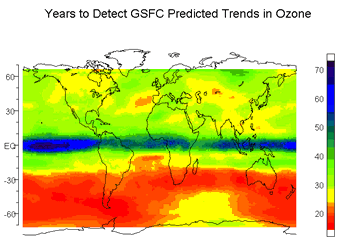SRRB Research
 |
(on CIRES web site) |
Summary
The research program at the Surface Radiation Research Branch of ARL focuses on several topics, including development of an improved Umkehr algorithm for retrieving ozone profiles, analysis of cloud and aerosol radiative effects, UV radiation monitoring and instrumentation calibration, and interpretation of surface radiation measurements.
Areas of
emphasis include:
- 1) analyses of the surface radiation for trends and regional characteristics,
- 2) modeling the radiative transfer process as a means of
inferring the effects of clouds, aerosols and ozone on the transmission of
visible radiation and UV,
- 3) evaluating the field performance characteristics
of UV, visible and IR radiometers to improve our understanding of their
behavior,
- 4) developing rigorous laboratory methods for characterizing and
calibrating UV instruments (because of the difficulty in making reliable
measurements in the UV-B region of the solar spectrum),
- 5) comparing
surface measurements with those made or inferred from other observing
systems such as satellites, and
- 6) the development of new instruments to provide ancillary information that will aid in the interpretation of the SURFRAD and other surface radiation measurements.
Interpreting measured surface radiation quantities in terms of diagnostics and radiative transfer model applications is an ongoing process. To carry out this work, SRRB has a strong complement of radiative transfer and environmental data analysis experts. In conducting their research, SRRB scientists have established several cooperative linkages with scientists at universities and government institutions. Among these are North Carolina State University, SUNY at Albany, the University of Maryland, the University of Chicago, the Pennsylvania State University, the University of Arizona, the University of Wyoming, UCAR, NASA Goddard and NASA Langley, EPA, USDA, NWS, and NIST. For example, discussions are underway with UCAR officials to have GPS precipitable water vapor receivers installed at all ISIS stations, and a joint venture with NOAA ETL has resulted in the development of NOAA's first stand-alone, field-hardened cloud and aerosol lidar, which is currently undergoing field tests. It is planned that eventually, these lidars will be placed at SURFRAD (ISIS level 2) stations. SRRB has also developed an inexpensive cloud cover detector and deployed these instruments at each SURFRAD station.
The balance of measurements and basic and applied research, in concert with many ties to the outside research community, makes SRRB one of the most well-rounded groups in NOAA.
